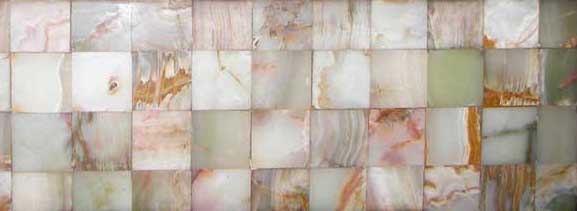Illustrated Architecture Dictionary ............... Illustrated FURNITURE Glossary
Alabaster

![]()
Illustrated Architecture Dictionary ...............
Illustrated FURNITURE
Glossary
Alabaster

A name applied to varieties of two distinct minerals: gypsum and calcite. The former is the alabaster of the present day; the latter is generally the alabaster of the ancients.
Calcite alabasterCalcite alabaster is either a stalagmitic deposit, from the floor and walls of limestone caverns, or a kind of travertine, similarly deposited in springs of calcareous water. Its deposition in successive layers gives rise to the banded appearance that the marble often shows on cross-section, whence it is known as onyx
The Greek name alabastrites is said to be derived from the town of Alabastron, in Egypt, where the stone was quarried, but the locality probably owed its name to the mineral
When cut in thin sheets, alabaster is translucent enough to be used for small windows, and has been used so in medieval churches, especially in Italy.
For more information, see Alabaster: Egypt’s Rock of Ages
Gypsum AlabasterFound in England in the Midlands; in the continent of Europe, in Florence, Italy. Tuscan alabaster occurs in nodular masses embedded in limestone.
The coarser varieties of alabaster are converted by calcination into plaster of Paris.
Examples from Buffalo architecture
- Illustration above: Fireplace surround - Griggs House, East Aurora, NY
Other examples:
- Lamp and vases - King Tutankhamun Tomb Furnishings
